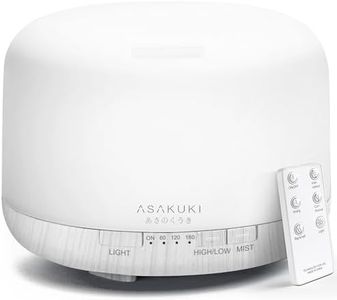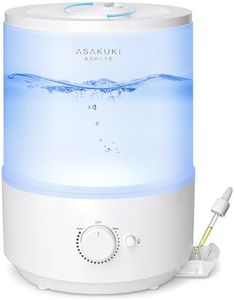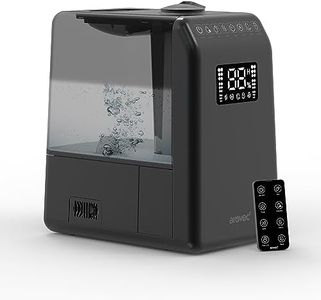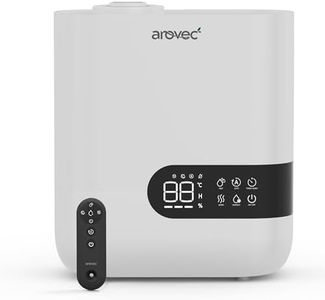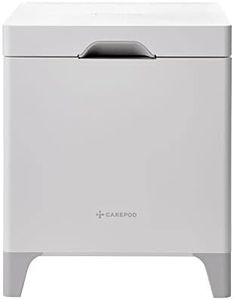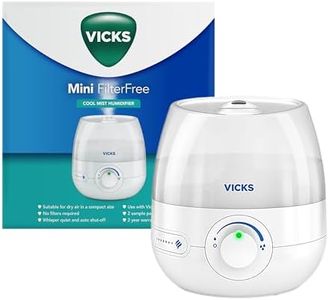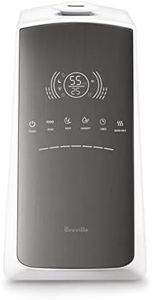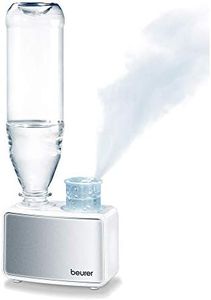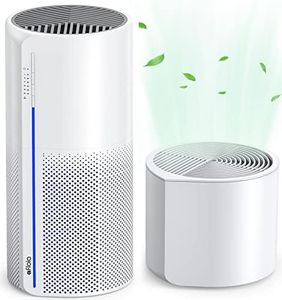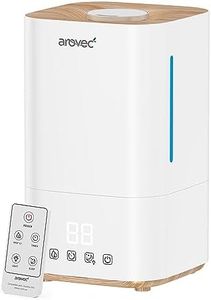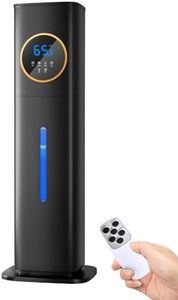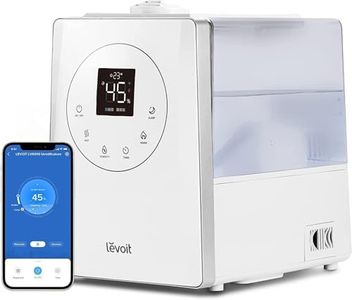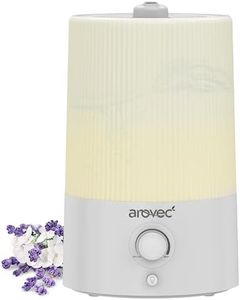We Use CookiesWe use cookies to enhance the security, performance,
functionality and for analytical and promotional activities. By continuing to browse this site you
are agreeing to our privacy policy
10 Best Humidifiers
From leading brands and best sellers available on the web.Buying Guide for the Best Humidifiers
Choosing the right humidifier can greatly improve your indoor air quality, comfort, and even health, especially in dry climates or during winter months. Humidifiers come in different types and sizes, and picking the right one depends on factors like your room size, sensitivity to noise, maintenance preferences, and specific needs like allergy relief or baby care. Understanding the various specifications will help you find a humidifier that’s a good fit for your home and lifestyle.Type (Ultrasonic, Evaporative, Steam/Vaporizer)This refers to the technology a humidifier uses to add moisture to the air. Ultrasonic humidifiers use high-frequency vibrations and tend to be quiet and energy-efficient, making them good for bedrooms or offices. Evaporative humidifiers use a wick filter and a fan to disperse moisture; they usually self-regulate humidity and can handle larger spaces. Steam or vaporizer models use heat to create steam, which can be helpful for congestion but may need more power and extra caution around children. The type affects maintenance, energy use, noise, and suitability for your specific needs, so you should choose based on where you’ll use it and any sensitivities you may have.
Coverage Area (Square Feet or Square Meters)The coverage area tells you how much space a humidifier is designed to humidify, usually listed in square feet or meters. Small units are best for bedrooms or offices; larger models can handle open living rooms or multiple rooms. If you get a unit that's too small, it won’t be effective, while an oversized one might add too much moisture or be unnecessarily bulky. Measure the room where you plan to use the humidifier and match the product’s coverage specification to that size.
Tank CapacityThis is the amount of water the humidifier can hold at one time. A bigger tank means longer run times between refills, which is convenient for overnight use or larger rooms. However, larger tanks can make the unit heavier and bulkier. If you want minimal maintenance and long operation hours, go for a larger tank. For smaller rooms or if you don’t mind refilling, a compact model with a smaller tank might suit you fine.
Noise LevelNoise level indicates how loud the humidifier is while operating. Some people are sensitive to sound, especially if using a humidifier in a bedroom or nursery. Ultrasonic models are generally the quietest, while evaporative and steam models generate more noise. Check for decibel ratings or user feedback if quiet operation is a priority; otherwise, most people get used to the sound after a while.
Humidity Control (Manual or Automatic)Humidity control refers to how you set or maintain the desired humidity level. Manual control lets you adjust output but requires you to monitor moisture levels yourself. Automatic control comes with a built-in humidistat that maintains a set humidity level, turning off the unit when optimal moisture is reached. If you want easy, hands-off operation or need to avoid over-humidifying a space (which can lead to mold), consider a model with automatic control.
Filter Requirement and MaintenanceSome humidifiers use filters to trap impurities or minerals from the water, which can help if you have hard water or allergies. Filtered systems need replacement filters, adding to maintenance over time. Filter-free systems mean less frequent upkeep, but you’ll still need to clean them regularly to prevent mold or bacteria. If you prefer low maintenance, look for filter-free models, but if you want the cleanest mist possible, you might prefer one with a filtration system.
Additional FeaturesSome humidifiers offer extra features like night lights, aromatherapy compatibility, timers, or remote controls. These can make using the humidifier more convenient or enjoyable but aren't always necessary. Think about which, if any, of these features would actually improve your experience or suit your lifestyle.
